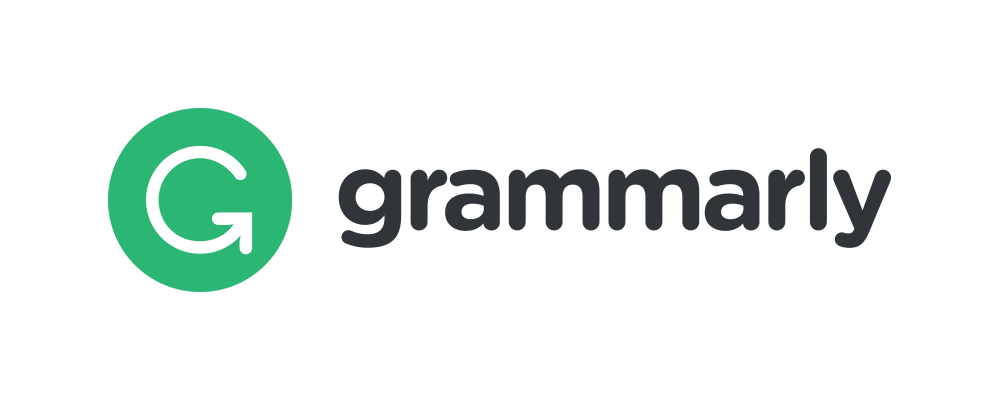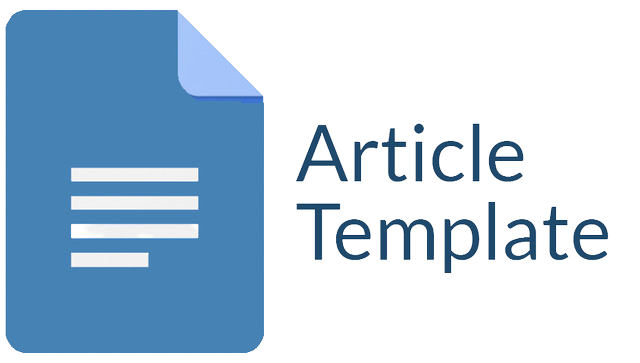EFL JUNIOR HIGH SCHOOL STUDENTS’ PERCEPTION TOWARDS USING YOUTUBE IN LEARNING PROCESS OF ENGLISH LISTENING SKILLS
Abstract
Abstract: Choosing the right learning media can help students to get a better learning achievement. YouTube is known as the most visited video sharing and creating site in the world. This study aims to explore about students' perception towards using YouTube media in their learning process of English listening skills. Students tend to feel bored due to monotonous learning activities in the classroom without audio-visual media. This study also explored students’ perceptions on the types of videos they most prefer as a learning media in Junior high school. The subjects of this study are eighth grade students of one of junior high school in Karawang. This study used qualitative descriptive as the method. The data was collected from an online questionnaire through Google Form to make it easier to collect and analyze data. The result of this study showed that students have positive responses towards the English learning process in listening skills using YouTube. Students agree that using YouTube media as a learning tool in listening skills makes them more interested and motivated in deepening their English skills both for listening skills and speaking skills. They also recommended YouTube as an English learning media due to various video types that were provided in YouTube media.
Downloads
References
Ahmed, S. A., Othman, B. J., Gardi, B., Sabir, B. Y., Ismael, N. B., Hamza, P. A., Sorguli, S., Aziz, H. M., Ali, B. J., & Anwar, G. (2021). Students’ attitudes towards learning English in the Kurdistan region of Iraq. International Journal of English Literature and Social Sciences (IJELS), 6(3).
Albiladi, W. S., Abdeen, F. H., & Lincoln, F. (2018). Learning English through movies: Adult English language learners’ perceptions. Theory and Practice in Language Studies, 8(12), 1567–1574.
Anggrarini, N., & Faturokhman, I. (2021). Students’ Perception on The Use of YouTube in English Language Learning During Pandemic in Wiralodra University. JELLT (Journal of English Language and Language Teaching), 5(1), 86–99.
Atiyah, F., & Izzah, L. (2019). A comparative study on the effectiveness of using direct and audiovisual methods for enhancing students listening comprehension. English Language in Focus (ELIF), 2(1), 9–16.
Brown, G., & Yule, G. (1983). Teaching the Spoken Language. In Cambridge University Press. (Vol. 2).
Cahyana, A. A. C. (2020). The use of YouTube video in teaching English for foreign language at vocational high school. Jurnal Pendidikan Bahasa Inggris Indonesia, 8(2), 1–11.
Derbal, M. (2022). Teachers’ and Learners’ Attitudes towards the Use of Short-videos in Oral Classes to Enhance EFL Learners’ Listening Skills. Depot Institutionnel . http://dspace.univ-jijel.dz:8080/xmlui/handle/123456789/11502
Dhillon, B. P. S. (2015). The Effect of Using Movie as Media on Listening Comprehension for the Fifth Semester Students at Teacher Training and Education Faculty Pematangsiantar. JETAFL (Journal of English Teaching as a Foreign Language).
Hardiah, M. (2019). Improving students listening skill by using audio visual media. Al-Lughah: Jurnal Bahasa, 7(2), 39–49.
Krivosheyeva, G., Zuparova, S., & Shodiyeva, N. (2020). Interactive way to further improve teaching listening skills. Academic Research in Educational Sciences, 3, 520–525.
Lestari, J. A. (2019). The Use of Youtube Vlog to Improve the Students’ Listening Skill of MTs Samarinda. Tarbiyah Wa Ta’lim: Jurnal Penelitian Pendidikan Dan Pembelajaran, 6(1), 35–45. https://doi.org/10.21093/twt.v6i1.2041
Marbun, N. B. E., Simanjuntak, R. M., & Rajagukguk, M. (2023). Use of YouTube in Improving Listening Skill of 9th Grade Students of SMP N 2 Labuhan Batu Utara. Journal Corner of Education, Linguistics, and Literature, 2(4), 311–317. https://doi.org/10.54012/jcell.v2i4.144
Muslihah, S., Muthohar, P. M., Mufidah, L. N., & Haryanti, N. (2022). Strategi Pembelajaran Tematik Terpadu Berbasis Muatan Heuristic Dalam Membentuk Kompetensi Siswa di Masa Pandemi Covid 19. EDUSAINTEK: Jurnal Pendidikan, Sains Dan Teknologi, 8(2), 325–341. https://doi.org/10.47668/edusaintek.v8i2.376
Ningtiyas, W. A., Suryati, N., & Ariani, N. (2021). Students’ Intensity in Watching English Videos on YouTube and Their Listening Skill. J-ELLiT (Journal of English Language, Literature, and Teaching), 4(2).
Nofrika, I. (2019). EFL Students’ Voices: The Role of YouTube in Developing English Competences. Journal of Foreign Languange Teaching and Learning, 4(1). https://doi.org/10.18196/ftl.4138
Nurdiawati, D. (2019). YouTube Animated Movies as an Alternative Media to Enhance Students’ Listening Skills. English Focus: Journal of English Language Education, 2(2), 121–131.
Pamungkas, I. B. A., & Adi, S. S. (2020). Students’ Perception About Improving English Listening Skills Using Movies Among The Vocational High School Students. Erudio Journal of Educational Innovation, 7(2), 128–138.
Pratama, S. H. H., Arifin, R. A., & Widianingsih, A. W. S. (2020). The Use of Youtube as a Learning Tool in Teaching Listening Skill. International Journal of Global Operations Research, 1(3), 123–129. https://doi.org/10.47194/ijgor.v1i3.50
Qomariyah, S. S., Permana, D., & Hidayatullah, H. (2021). The Effect of YouTube Video on Students’ Listening Comprehension Performance. Jo-ELT (Journal of English Language Teaching) Fakultas Pendidikan Bahasa & Seni Prodi Pendidikan Bahasa Inggris IKIP, 8(1), 67. https://doi.org/10.33394/jo-elt.v8i1.3837
Restami, M. P., & Samsudin, M. (2023). Media Pembelajaran Audio-Visual Untuk Motivasi Dan Keterampilan Berpikir Kritis Siswa Dengan Pendekatan Scientific. EDUSAINTEK: Jurnal Pendidikan, Sains Dan Teknologi, 10(2), 496–513.
Susiani, R., Farizawati, F., Dauyah, E., & Riska, K. (2020). Improving Students’ Listening Skills by Using Animation Videos Through Sentence Completion at SMPN 1 Bandar Baru. Jurnal Dedikasi Pendidikan, 4(2), 277–288.
Van, L. K., Dang, T. A., Pham, D. B. T., Vo, T. T. N., & Pham, V. P. H. (2021b). The effectiveness of using technology in learning English. AsiaCALL Online Journal, 12(2), 24–40.
Copyright (c) 2024 Galuh Putri Ramadhani, Yogi Setia Samsi

This work is licensed under a Creative Commons Attribution-ShareAlike 4.0 International License.
Jurnal allows anyone to compose, correct, and do derivative works, even for commercial purposes, as long as they credit for the original work. This license is the freest. It is recommended for maximum distribution and use of licensed material.
The submitted paper is assumed not to contain any proprietary materials that are not protected by patent rights or patent applications; The responsibility for technical content and protection of proprietary materials rests with the authors and their organizations and not the responsibility of journal or its editorial staff. The primary (first/appropriate) author is responsible for ensuring that the article has been viewed and approved by all other authors. The author's responsibility is to obtain all necessary copyright waivers to use any copyrighted material in the manuscript before submission.
Jurnal Pendidikan, Sains dan Teknologi allows the author(s) to hold the copyright without restrictions and allow the author(s) to retain publishing rights without restrictions. Jurnal Pendidikan, Sains dan Teknologi CC-BY-SA or an equivalent license as the optimal license for the publication, distribution, use, and reuse of scholarly work. Jurnal Pendidikan, Sains dan Teknologi allows the author(s) to hold the copyright without restrictions and allow the author(s) to retain publishing rights without restrictions. Jurnal Pendidikan, Sains dan Teknologi CC-BY-SA or an equivalent license as the optimal license for the publication, distribution, use, and reuse of scholarly work.
In developing strategy and setting priorities Jurnal Pendidikan, Sains dan Teknologi recognize that free access is better than priced access, libre access is better than free access, and libre under CC-BY-SA or the equivalent is better than libre under more restrictive open licenses. We should achieve what we can when we can. We should not delay achieving free in order to achieve libre, and we should not stop with free when we can achieve libre.
Jurnal Pendidikan, Sains dan Teknologi is licensed under a Creative Commons Attribution-ShareAlike 4.0 International License.
You are free to:
- Share a copy and redistribute the material in any medium or format
- Adapt a remix, transform, and build upon the material for any purpose, even commercially.
- The licensor cannot revoke these freedoms as long as you follow the license terms.






